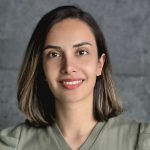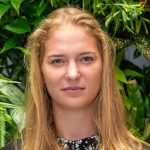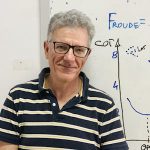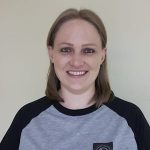ISEK Around the World
An online event to connect the ISEK community across the world over a 17-hour period
The “ISEK Around the World” online event will consist of a series of scientific presentations and discussions, held across different time-zones. The second edition, Wednesday, September 24, 2025 will include speakers from 15 different counties.
These events will provide an opportunity to strengthen and expand the ISEK community, for current and future members to connect and engage with each other, regardless of their location or career stage. The meeting will feature five sessions, with speakers ranging from students and ECRs to senior researchers. In addition to the sessions, Twitter thread discussions will be hosted based on the event theme.
ISEK Around the World is organized by the Early Career Researcher Committee.
Mark your calendar for the second edition on September 24, 2025:
- Event 1: 7:00 AM UTC-chaired by Dr. Kylie Tucker
- Event 2: 11:30 AM UTC-chaired by Dr. Ramakrishnan Swaminathan
- Event 3: 4:00 PM UTC-chaired by Dr. Silvia Muceli
- Event 4: 8:00 PM UTC-chaired by Dr. Felipe Carpes
- Event 5: 12:00 AM UTC (Sept 25)-chaired by Dr. Eric Perreault
Browse Previous Events
Wednesday, Sept 24, 2025
Australia, Japan, New Zealand
Moderated by Kylie Tucker

Justin Kavanagh
Griffith University
Justin Kavanagh is an Associate Professor at Griffith University who leads the Neural Control of Movement laboratory. His work has a focus on how neurotransmitter activity regulates motor circuits in the cortex and the spinal cord that contribute to muscle activity. His laboratory investigates the role of serotoninergic neuromodulation in muscle activation, as well as mechanisms of motor dysfunction in people with Multiple Sclerosis.
Tuning excitability in the motor system: how serotonin modulates motoneurone output to influence muscle force
Synaptic inputs to motoneurones will typically activate two classes of receptors: ionotropic and neuromodulatory. In a general sense, inputs to ionotropic receptors are command signals to activate the motoneurone, whereas neuromodulatory receptors modify the motoneurone’s responsiveness to ionotropic input. This presentation will focus on the role that serotonin has as a neuromodulator, where data from cellular and animal studies have revealed the importance that serotonin has for regulating motoneurone discharge. Findings from our human experiments will be discussed, where drug interventions have been used to safely study how serotonin activity in the CNS influences motor function. In these experiments, we reveal that descending drive is critical for serotonin to exert effects on motoneurones, with the 5-HT2 receptor playing a significant role in regulating motoneurone excitability. We demonstrate that blocking 5-HT2 receptor activity can suppress motor unit discharge rates, persistent inward currents, and self-sustained firing, which ultimately leads to reduction in muscle force. Since many clinical populations experience muscle weakness, neuromodulatory receptors may be a potential avenue for therapeutic development to support muscle activation through central excitability modulation.

Katsuki Takahashi
Doshisha University
Katsuki Takahashi is a postdoctoral research fellow in the Organization for Research Initiatives and Development at Doshisha University, Japan.
Unveiling the giant: Diffusion tensor imaging-based 3D architectural analysis tells us about how sizable muscles form and act in living humans
Skeletal muscles driving animal movements show a wide variety of architecture in terms of the geometric arrangement of fascicles (bundles of muscle fibers), which largely determine how muscles act on the crossing joint. While muscle architecture has been extensively examined in living human experiments, our understanding is limited to certain small muscles located in the superficial sites due to the limitations of conventional ultrasound imaging. As a promising alternative to ultrasonography, diffusion tensor imaging (DTI), one of the MRI techniques, and related fiber tracking have emerged, enabling visualization and quantification of muscle fascicles over a large area of interest in 3D space. In this symposium, I will introduce recent works including our studies that utilized DTI to unveil how “giant” muscles, such as the gluteus maximus and adductor magnus, form and act in living human bodies. Our results provide novel insights into the functional role of each muscle beyond the current understanding, which strongly relied on anatomical studies. This potentially contributes to understanding how individual muscles control bodily movements and hints at the design of training/rehabilitation for enhancing our motor performance.

Max Andrews
University of Queensland
Max Andrews ia a PhD Candidate at The University of Queensland, Australia.
Motor unit hamstring muscle adaptations following 9 weeks of eccentric training
Neural adaptations in motor unit properties contribute to early strength gains from eccentric training, yet these mechanisms remain unexplored in the hamstrings. This study examined changes in biceps femoris long head (BFlh) motor unit recruitment threshold and discharge rate during submaximal isometric contractions after 3 and 9 weeks of eccentric training.
Nineteen recreationally active men completed a 9-week eccentric program, with assessments pre-training, at week 3, and post-training. High-density surface electromyography was recorded during submaximal isometric knee flexions, and motor units were decomposed and tracked across sessions by matching action potential waveforms. Linear mixed-effects models compared recruitment threshold and discharge rate of matched units across time.
A total of 660 motor units were identified, with 68 successfully tracked over the intervention. Knee flexor strength increased by 6% at week 3 and 17% at post-training. Recruitment threshold increased by 12% at week 3 and 18% at post-training. Discharge rate increased by 6% at week 3 but returned to baseline by post-training.
These findings indicate that early strength gains with eccentric are underpinned by increased motor unit discharge rate and recruitment threshold, whereas continued strength improvement beyond 3 weeks reflects a shift toward structural rather than neural adaptations.

Manuela Zimmer
University of Stuttgart
Manuela is nearing the completion of her PhD at the University of Stuttgart, Germany, under the supervision of Filiz Ateş. She is currently based at the Auckland Bioengineering Institute, where she seeks to continue her research. Her work focuses on the use of advanced imaging techniques to study skeletal muscle structure and function, aiming to enhance our understanding of in vivo muscle mechanics.
Non-invasive characterization of skeletal muscle mechanics through imaging: Opportunities and limitations
Skeletal muscle is one of the most fascinating tissues of our body due to its capability to actively generate forces. Our current understanding of in vivo muscle behavior is largely based on observations from animal muscles, as direct muscle force measurements in humans are limited and highly invasive. Still, we know from decades of research that muscle geometry and architecture are closely tied to its function, and this relationship manifests as length- and activity-dependent nonlinear behavior. The advancement of medical imaging techniques provides a great opportunity to characterize this behavior non-invasively, in vivo, at the whole muscle level. Ultrasound-based techniques such as shear wave elastography (SWE) and MRI-based techniques such as diffusion-tensor imaging each give unique insights; however, their use and interpretation of the derived measures are still challenging.
In this presentation, we will explore what SWE experiments in passive and active muscle states can reveal, examine the current limitations to interpreting these data, and discuss how MRI-based models might help overcome these challenges in the future.
Wednesday, Sept 24, 2025
India, Singapore
Moderated by Ramakrishnan Swaminathan

Edward Jero
VIT Chennai
Dr. S. Edward Jero is the Assistant Director of the Center for Human Movement Analytics (CeHMA) at VIT Chennai. He earned his Ph.D. in Biomedical Signal Processing from IIT Madras and specializes in areas including biomedical signal processing, artificial intelligence, machine learning, data analytics, IoT for healthcare, and rehabilitation engineering. His research focuses on biofeedback acquisition, surface electromyography (sEMG) analysis, markerless motion capture, and wearable sensor technologies. He has contributed significantly to the development of AI driven models for biosignal interpretation and IoT-based telerehabilitation systems. Formerly the Chief Technology Officer at Karuvee Innovations, an IIT Madras incubated startup, Dr. Jero played a pivotal role in designing patient-specific assistive technologies. His expertise extends to embedded systems design, and biomarker development using AI. With over ten publications in reputed journals and presentations at various international conferences, he continues to lead impactful, interdisciplinary research that bridges engineering innovation with clinical and human movement applications.
Recent Trends and Challenges in Surface Electromyogram Signal Processing for Human Movement Analytics
Surface Electromyography (sEMG) signals have become an essential modality for understanding neuromuscular dynamics in human movement analytics. With advancements in wearable sensors and signal acquisition systems, sEMG enables real-time assessment of muscle activation during functional tasks. Recent trends focus on integrating sEMG with motion capture systems, inertial sensors, and AI-based models to extract clinically relevant features. Novel approaches such as high density sEMG, machine learning classification, and EMG-driven musculoskeletal modelling have shown promising applications in sports performance and rehabilitation. However, challenges persist due to signal noise, motion artifacts, electrode placement variability, and inter-subject differences. The non-stationary nature of sEMG and the difficulty in standardizing signal preprocessing limit its widespread adoption in dynamic tasks. Additionally, interpreting sEMG in pathological conditions requires contextual biomechanical modelling. Addressing these challenges is key to developing reliable biofeedback systems and predictive analytics. This talk explores the state-of-the-art in sEMG processing and highlights the path forward for translational applications in human movement science.

Phoebe Ng
KK Women’s and Children’s Hospital
Dr. Phoebe Ng is a paediatric musculoskeletal physiotherapist at KK Women’s and Children’s Hospital, Singapore. She recently completed her PhD at The University of Queensland, Australia. She specialises in the conservative management of adolescent idiopathic scoliosis (AIS). Her doctoral research identified asymmetrical paraspinal muscle activation in adolescents with AIS, highlighting its potential role in uneven spinal loading and curve progression. Dr Ng remains actively involved in collaborative research on paediatric musculoskeletal health and digital health innovations to improve long-term outcomes for children and adolescents.
Maximal and asymmetrical submaximal paraspinal muscle activation in Adolescent Idiopathic Scoliosis during simple back extension tasks.
Adolescent idiopathic scoliosis (AIS) is characterised by three-dimensional vertebral and disc wedging. It is well-known that muscle activity and morphology influence muscle force generation, and that the forces applied to bones and discs are substantial moderators of growth and adaptation. Evidence suggest that paraspinal muscle imbalances may contribute to curve progression in AIS. However, findings across studies remain inconsistent, partly due to methodological variations. This study investigated whether adolescents with AIS demonstrate greater asymmetry in paraspinal muscle activation compared to peers without scoliosis during a simple, symmetrical, submaximal trunk extension task.
Twenty-four females with right thoracic AIS (mean age 13.8 ± 1.5 years) and 20 age-matched controls (mean age 13.8 ± 1.8 years) were recruited. Surface electromyography recorded bilateral muscle activity at T9 and T12 during submaximal trunk extensions performed at 10–20% of each individual’s maximal voluntary contraction. Symmetry of muscle activation was quantified using a log-transformed right-to-left ratio, and linear mixed modelling assessed between-group differences.
Findings from this study highlight localised asymmetry in paraspinal muscle activation at the curve apex in AIS. Such imbalances may contribute to asymmetrical spinal loading and potentially influence curve progression during growth.

Deepa Hiremath
Indian Institute of Technology Madras
Deepa S. Hiremath is currently pursuing a Ph.D. in Biomedical Engineering at the Indian Institute of Technology Madras. Her research focuses on the analysis of muscle fatigue using surface electromyography and Myotonometry. She holds a Master’s degree in Computer Integrated Manufacturing and a Bachelor’s degree in Mechanical Engineering from Anna University. Her broader interests include biomechanics and biomedical signal processing.
Effect of Viscoelasticity on Myoelectric Manifestation of Muscle Fatigue using Electromyography and Myotonometry
Muscle fatigue is a neuromuscular phenomenon characterized by a decline in the ability to generate force during sustained muscle contractions. Surface Electromyography (sEMG) offers a non invasive approach for monitoring the myoelectric activity associated with muscle fatigue. While traditional analyses focus on the electrical behaviour of muscles, recent advancements highlight the importance of integrating mechanical properties to gain a comprehensive understanding of fatigue. In this study, an isometric fatiguing protocol is employed using the biceps brachii muscle under a 3 kg load, with simultaneous acquisition of sEMG signals and myotonometric measurements. Mechanical parameters are recorded before and after the fatigue task. The acquired sEMG signals undergo preprocessing and are segmented into non-fatigue and fatigue phases. To capture transient spectral changes, the advanced time-frequency analysis technique is utilized. This approach facilitates the investigation of the interplay between fatigue-induced changes in the sEMG signal and the underlying mechanical properties of muscle tissue, contributing to a more holistic understanding of neuromuscular fatigue.
Wednesday, Sept 24, 2025
Sweden, South Africa, Iceland, Slovenia, Greece
Moderated by Silvia Muceli

Roopam Dey
Impulsebiomed
Roopam Dey is General Manager at Impulsebiomed. Roopam dedicates his expertise to the development of cutting-edge medical devices and orthopaedic implants. He collaborates with clinicians to advance research and development initiatives, mentors prospective postgraduate students, and provides guidance to emerging biomedical start-ups as they navigate the realm of clinical research. He has worked in academic institutions in multiple countries, including France, India, and South Africa.
Separation of Coracobrachialis and Short Head of Biceps by High-Density surface electromyography (HD sEMG) technique?
This study evaluated whether ultrasound-guided identification of residual muscle bellies enhances EMG electrode placement in transtibial amputees (TTAs), comparing relaxed versus contracted muscle thickness and EMG signal quality against traditional palpation. Nine TTAs attended two sessions. In session 1, ultrasound measured thickness of Tibialis Anterior (TA), Peroneus Longus (PL), and Gastrocnemius Lateral/Medial (GL/GM) in relaxed and contracted states, marking the thickest region for electrode placement. In session 2, a prosthetist located electrodes by palpation. Distances between ultrasound- and palpation- identified spots were documented, and EMG signals were collected from both locations during contraction. Muscle thickness increased significantly upon contraction (p < 0.001), with GM thickest and PL thinnest (p < 0.001). Palpation misidentified muscles in four cases. In 72.2% of cases, the distance between ultrasound- and palpation-identified spots was more than 10 mm. The mean distance was the greatest for PL and GL. Ultrasound-guided placement produced slightly higher, though non-significant, signal amplitudes (p = 0.06) and significantly higher SNR (p = 0.04). In conclusion, relying on palpation to identify muscles in TTAs may provide irrelevant EMG due to erroneous placement. Ultrasound improves EMG electrode placement and signal quality in TTAs, with potential benefits for prosthetic control.

Faranak Rostamjoud
University of Iceland
Faranak is a final-year PhD candidate in Biomedical Sciences at the University of Iceland. Her research focuses on evaluating the performance of residual muscles in transtibial amputees using electromyography and ultrasound. She is also involved in designing targeted training programs to enhance muscle control for improved use of EMG-based prosthetic devices.
Ultrasound Imaging for Accurate EMG Electrode Placement in Transtibial Amputees
This study evaluated whether ultrasound-guided identification of residual muscle bellies enhances EMG electrode placement in transtibial amputees (TTAs), comparing relaxed versus contracted muscle thickness and EMG signal quality against traditional palpation. Nine TTAs attended two sessions. In session 1, ultrasound measured thickness of Tibialis Anterior (TA), Peroneus Longus (PL), and Gastrocnemius Lateral/Medial (GL/GM) in relaxed and contracted states, marking the thickest region for electrode placement. In session 2, a prosthetist located electrodes by palpation. Distances between ultrasound- and palpation- identified spots were documented, and EMG signals were collected from both locations during contraction. Muscle thickness increased significantly upon contraction (p < 0.001), with GM thickest and PL thinnest (p < 0.001). Palpation misidentified muscles in four cases. In 72.2% of cases, the distance between ultrasound- and palpation-identified spots was more than 10 mm. The mean distance was the greatest for PL and GL. Ultrasound-guided placement produced slightly higher, though non-significant, signal amplitudes (p = 0.06) and significantly higher SNR (p = 0.04). In conclusion, relying on palpation to identify muscles in TTAs may provide irrelevant EMG due to erroneous placement. Ultrasound improves EMG electrode placement and signal quality in TTAs, with potential benefits for prosthetic control.

Nina Murks
University Maribor
Nina Murks is a Teaching Assistant (Final-year PhD Candidate) in the System Software Laboratory, Faculty of Electrical Engineering and Computer Science at University of Maribor, Slovenia
MU Filters: From Theory to Application
Motor units (MUs), the fundamental functional units of the neuromuscular system, provide critical insight into neural codes that govern our skeletal muscles. Accurate identification of MU discharge patterns enables a deeper understanding of neuromuscular function and control. The high-density electromyography (hdEMG) processing pipeline comprises five essential steps: hdEMG acquisition, channel selection, blind source separation-based MU filter estimation, MU discharge segmentation, and assessment of physiological parameters, such as MU discharge rate, recruitment threshold, and motor excitability as assessed by the ∆F method.
This presentation will focus on the third and fourth steps, emphasizing the theory and implementation of MU filters in practice. Within a convolutive mixing model of hdEMG, motor unit action potentials (MUAPs) serve as mixing coefficients while MU discharges represent neural codes originating from the central nervous system. Summation of MUAPs, combined with noise, produces hdEMG signals. Decomposition algorithms invert this model, enabling extraction of MU discharges from hdEMG signals by applying MU filters.
We will present the mathematical foundations of MU filter estimation, strategies for their optimization, and methods to evaluate filter quality. Additionally, we will demonstrate the application of MU filters to hdEMG and EEG signals, highlighting typical use cases and addressing key concerns.
By bridging theoretical frameworks with practical applications, this talk aims to illustrate how MU filters can advance our understanding of neuromuscular systems and support future developments in neural interfacing and rehabilitation technologies.

Chrysostomos Sahinis
University of Thessaloniki
Chrysostomos Sahinis is a Ph.D. candidate in kinesiology at the Laboratory of Neuromechanics, Department of Physical Education and Sport Sciences at Serres, Aristotle University of Thessaloniki, Greece.
Task-Specific Effects of Static Stretching on Hamstring Force Output and Motor Unit Behavior
The present study aimed to explore the influence of static stretching on maximal force, force steadiness, and motor unit (MU) discharge characteristics of the semitendinosus and biceps femoris. Fifteen young participants completed a randomized, counterbalanced, within-subject design. Before and after the passive static stretching (5 sets x 90-s trials), participants performed steady isometric contractions at 10% and 40% of maximum voluntary contraction force in two different tasks. The knee-flexion task was performed at a 30° knee joint angle with the hip in a neutral position, and the hip-extension task was conducted with the knee fully extended and the hip neutral. Four high-density EMG electrodes were placed along the two muscles. Static stretching reduced significantly (-18.9%) maximal force and impaired force steadiness in both target forces, with task-specific manner depending on the stretching maneuver. After static stretching, there were significant increases in mean discharge rate, coefficient of variation for interspike interval, and SD of the filtered cumulative spike train. Hip stretching primarily affected the biceps femoris, while knee stretching altered the semitendinosus muscle. Also, knee stretching influenced more the distal, while hip stretching affected the proximal regions. Static stretching impaired force profile and MU behavior in a task- and region-specific manner.
Wednesday, Sept 24, 2025
Brazil, Uruguay, USA
Moderated by Felipe Carpes

Carlo Biancardi
Universidad de la República
Dr. Biancardi is the Director of LIBiAM (Lab. of Biomechanics and Movement Analysis), Dept. of Biological Sciences, CENUR Litoral Norte, Universidad de la República, Paysandú, Uruguay. His main research topic is the physiomechanics and modular control of locomotion.
Muscle synergies during asymmetric gaits and tasks
Understanding how the nervous system coordinates muscle activity during asymmetric locomotor tasks provides key insights into motor control strategies and their adaptability. Muscle synergies, or low-dimensional motor modules, are hypothesized to simplify movement control by recruiting groups of muscles in a coordinated fashion. In my research group studies, we explored the modular organization of muscle activity during asymmetric gaits, such as unilateral skipping, which decouple traditional gait parameters like stride frequency and duty factor, lateral walking and gait transitions. Using surface electromyography and non-negative matrix factorization, we extracted muscle synergies EMG recordings in healthy individuals under symmetric and asymmetric conditions. Our findings show that while the number of synergies remains relatively stable, the composition and timing of individual synergies are modulated by task asymmetry. These adaptations suggest that the central nervous system reconfigures muscle coordination strategies to accommodate altered mechanical demands. The results not only reinforce the flexibility of motor modules but also highlight the relevance of asymmetric paradigms to study gait robustness and neuroplasticity. These insights may inform the development of targeted interventions for populations with impaired gait symmetry, such as post-stroke individuals or amputees.

Ashwini Kulkarni
Old Dominion University
Ashwini Kulkarni is Assistant Professor in the School of Rehabilitation Sciences at Old Dominion University. She obtained her Ph.D. in Biomechanics and Gerontolog at, Purdue University. Her research areas center around balance, mobility, fall prevention and aging.
Age-Related Differences in Proactive and Reactive Locomotor Adaptations: Linking Physiological and Cognitive Function to Gait Stability
Maintaining stable foot placement during walking relies on the precise coordination of proactive and reactive control strategies. Proactive adjustments occur in the 200–300 ms window before heel strike, while reactive responses emerge within 100–150 ms after perturbation onset. With aging, these mechanisms may become compromised, contributing to falls, which are a leading cause of morbidity in older adults. This study investigates how aging influences the temporal balance between proactive and reactive locomotor adaptations and how individual differences in physiological, cognitive, and psychological function contribute to these strategies. We will recruit 150 adults (ages 18–90) to perform treadmill walking tasks on an instrumented split-belt system with projected stepping targets. Proactive adaptation will be tested with predictable target shifts, while reactive adaptation will be examined under unpredictable perturbations across different gait phases. Outcomes will include step length, step width, and margin of stability, analyzed relative to pre- and post-perturbation time windows. Cognitive (MoCA, TMT), physiological (PPA components), and psychological (FES-I) assessments will be used to identify predictors of adaptation performance. By quantifying age-related changes in proactive and reactive control, and linking them to specific functional domains, this study aims to establish evidence-based parameters for targeted interventions to enhance gait adaptability and fall prevention in older adults.

Eliane Guadagnin
Instituto Brasil de Tecnologias da Saúde
Eliane Guadagnin is a researcher at the Instituto Brasil de Tecnologias da Saúde, Brasil; and Universidade Federal de Goiás, Brasil.
The impact of muscle structure and function on older adults’ functionality
This talk will explore the relationship between muscle structure and function and the functionality of older adults. Within this line of research, we seek to understand which muscles and which parameters of muscle structure (such as muscle quality, muscle thickness, fascicle length, and pennation angle) and muscle function (such as isometric, concentric, and eccentric strength, power, and rate of force development) are associated with older adults’ functionality. The lecture will highlight findings from our ongoing research over the past years, as well as recent advances in this field.

Jonaz Moreno Jaramillo
University of Massachusetts, Amherst
Jonaz’s most recent work is centered on locomotion adaptation using a custom-built adjustable surface stiffness treadmill. He is interested in learning whether asymmetric surface stiffness walking can promote neuromechanical adaptations that have not been achieved with the split-belt treadmill walking paradigm, which could be beneficial for individuals with a pathological gait. Additionally, he is interested in knowing if maintaining gait stability is a potential criterion that the human body uses to drive locomotor adaptation when exposed to asymmetric surface stiffness walking. Beyond his current work in the lab, Jonaz is co-founder and active president of the Latinx in Biomechanix nonprofit and has also acted as the president of the ASB UMass student chapter for over two years. As an immigrant from Mexico, Jonaz has always been interested in helping people from underrepresented groups and supporting the younger generation in joining the scientific community through biomechanics and human movement science.
Neuromuscular adaptation during and after asymmetric surface stiffness walking
Asymmetric surface stiffness walking increases peak muscle excitations at the ankle at push-off during early post-adaptation. The gastrocnemius and soleus had an increased ratio of muscle excitation asymmetry in early adaptation, favoring the soft side. Asymmetric surface stiffness walking can potentially promote neurological adaptation for post-stroke rehabilitation at critical gait cycle phases, improving walking performance
Wednesday, Sept 24, 2025
USA, Mexico
Moderated by Eric Perreault

Allison Hyngstrom
Marquette University
Dr. Hyngstrom graduated from Augustana College with a bachelor’s degree in biology and subsequently went on to receive a master’s degree in physical therapy from Washington University in St. Louis, MO. Following her clinical training, she worked for 3 years at the Rehabilitation Institute of Chicago where she primarily treated patients with neurological injury such as stroke. She then pursued her Ph.D. in neuroscience at Northwestern University in the laboratory of Dr. C.J. Heckman where she studied sensorimotor integration of spinal motoneurons. Dr. Hyngstrom came to Marquette in 2007 and completed a 1 year post doctoral fellowship with Dr. Brian Schmit (Department of Biomedical Engineering). In the fall of 2008, she joined the faculty of the Department of Physical Therapy as an Assistant Professor. Dr. Hyngstrom’s primary area of research is studying mechanisms of motor impairment, specifically muscle fatigue, in the chronic stroke population using a variety of biomechanical measurements.
Fluctuations in Common Synaptic Drive are Elevated in Chronic Stroke Survivors
Stroke survivors often exhibit impaired regulation of submaximal forces, which may be linked to disruptions in common synaptic drive (CSD) to motoneurons. This study quantified fluctuations in estimated CSD during a sustained, fatiguing knee extension contraction in chronic stroke survivors and neurologically intact controls. Surface EMG from the vastus lateralis was decomposed to extract motor unit discharge rates during the first and last 10% of a fatiguing contraction at 30% MVC. CSD fluctuations were estimated as the coefficient of variation of the first common component of smoothed discharge rates. Stroke survivors (n=19) had significantly greater fluctuations in CSD compared to controls (n=15) at baseline and during fatigue. Fatigue increased fluctuations in CSD in both groups. Additionally, greater fluctuations in CSD were associated with decreased force steadiness at both baseline and fatigue. Stroke survivors also showed higher variability in motor unit firing rates, reduced muscle activation during fatigue, and decreased force steadiness overall. These findings suggest that stroke-related disruptions in descending motor commands lead to greater variability in common input to motoneurons, which may impair force control. Quantifying fluctuations in CSD may provide a neural biomarker for motor impairment and offer a target for future rehabilitation strategies.

Raquel Martinez Valdez
Autonomous University of Aguascalientes
Raquel Martínez-Valdez is a postdoctoral research fellow at Autonomous University of Aguascalientes.
Focused ultrasound in brain diseases treatment
Focused ultrasound is a non-invasive non-ionizing therapy where the acoustic beam converges in a well localized region within a target. This region is usually named focus which presents an increase of acoustic intensity and, therefore, an increment of temperature. The characteristics of the focus depend on the configuration of the ultrasonic transducer, the operating frequency, electrical and acoustic power, exposure time, and both thermal and acoustic properties of the biological tissues, among others. In 1940’s, focused ultrasound was proposed for the treatment of Parkinson’s disease and Alzheimer’s disease through the skull, but there were limitations due to technological and imaging devices development. Moreover, as well as diagnostic ultrasound, focused ultrasound requires an acoustic window allowing the propagation of the mechanical waves inside tissues, where both hard and air containing tissues are mainly avoided. Focused ultrasound effects are being widely investigated for oncological treatment through thermal therapies in prostate, liver, kidney, breast tumors and osteosarcoma. However, in the last decade, due to technological advances, focused ultrasound has been investigated in the treatment of brain diseases, such as essential tremor and Parkinson’s disease through the skull. This talk addresses focused ultrasound application on brain diseases, such as essential tremors.

Julia Dunn
University of Denver
Julia Dunn is a postdoctoral research fellow at the University of Denver. Her area of research is focused on understanding how upper body biomechanics affects our daily movements.
Accuracy of glenohumeral joint center of rotation estimates using traditional motion capture versus a gold standard
Accurate estimation of the glenohumeral joint (GHJ) center of rotation (CoR) is essential for reliable shoulder biomechanics. This study evaluated the accuracy of three predictive methods—acromion, midpoint, and center point—for estimating GHJ CoR using optical motion capture, compared against a gold standard derived from synchronous bi-plane fluoroscopy. Five healthy adults performed shoulder motions including abduction, flexion, and external rotation. Root mean square error (RMSE) and axial errors were calculated across the full range of motion. None of the predictive methods met clinically acceptable thresholds, with RMSE exceeding 10 mm and axial errors surpassing ±5 mm. Error increased significantly with humeral elevation beyond 60°, but remained stable during rotation. The inclusion of technical markers slightly reduced axial error but did not substantially improve overall accuracy, likely due to soft tissue artifact. Directional axial errors revealed systematic biases in CoR estimation, with implications for over- or underestimation of joint loading. These findings underscore the limitations of predictive methods in high-elevation tasks and highlight the need for validated approaches in shoulder biomechanics. Future work will explore humeral marker placement and functional methods to improve GHJ CoR estimation using motion capture.

Hide Hayashi
University of Oregon
Hide Hayashi is a PhD candidate in the Neuromechanics lab at Univeristy of Oregon. His research interests lie in the morphological and mechanical properties of the Achilles tendon and its interaction with the in-series muscle tissue. He utilizes imaging modalities such as ultrasound and traditional biomechanical techniques to better understand regional strain patterns within healthy and diseased tendons, as well as in a fatigued state.
In vivo fascicle-tendon behavior of the gastrocnemius muscle in individuals with Achilles tendinopathy
Achilles tendinopathy is a degenerative condition characterized by pain and inflammation in the tendon. Previous work has demonstrated decreased tendon material and mechanical properties due to Achilles tendinopathy. While it is known that tendinous tissues contribute significantly to muscle-tendon unit (MTU) length change during isokinetically controlled joint actions, whether the fundamental changes to the tendon due to tendinopathy modulate muscle-tendon interactions remain unclear.
To this end, we had participants with (n=4) and without (n=4) symptoms of midportion Achilles tendinopathy perform isometric as well as concentric and eccentric plantar flexion contractions on a dynamometer at angular velocities of 30, 60, and 90˚/sec. During these trials, B-mode ultrasonography and surface electromyography were used to measure fascicle length changes and muscle activation, respectively. Despite significant differences in the VISA-A scores between groups, there were no measurable differences in tendon stiffness, fascicle behavior, or muscle activation between groups during the isokinetic trials. We additionally observed high individual variation in the contribution of tendinous tissue to MTU length changes. These data suggest tendon stiffness may be an important factor in determining muscle-tendon interactions, and that an individualized approach to rehabilitation exercises is needed to account for the large inter-subject variation.
